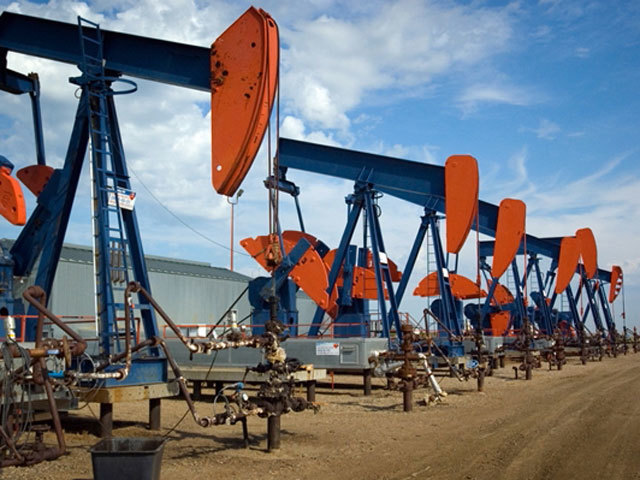
The world’s most powerful oilman brought a harsh message to Houston for executives hoping for a rescue from low prices: high-cost producers – many of them sitting in the room – need to either “lower costs, borrow cash or liquidate.”
For the thousands of executives attending the IHS CERAWeek conference, the message from Saudi Arabia oil minister Ali al- Naimi means deeper spending cuts, laying off more roughnecks and idling drilling rigs.
“It sounds harsh, and unfortunately it is, but it is the most efficient way to rebalance markets,” Naimi said.
As many as 74 North American producers face significant difficulties in sustaining debt, according to credit rating firm Moody’s Investors Service.
Shale explorers from Texas to North Dakota will be “decimated” in coming months amid a wave of restructurings and bankruptcies, said Mark Papa, the former EOG Resources Inc.
chief executive officer who helped create the shale industry more than a decade ago.
The survivors will be more conservative, Papa, who is now a partner at private-equity firm Riverstone Holdings LLC, said during a panel discussion on Tuesday.
Declining spending, rising debts and layoffs are starting to spread to Main Street, with the impact spreading from regional banks in Oklahoma to the economies of cash- strapped Venezuela and Brazil and to the North Sea in the UK.
West Texas Intermediate, the benchmark U.S. crude, slipped 30 percent last year amid a global glut and was at $31.24 a barrel at 2:45 p.m. in Hong Kong on Wednesday, down 2 percent for the session.
For the oil industry itself, the warning is a sign of more months — and perhaps years — of financial pain. The S&P 500 Oil and Gas index has fallen roughly 60 percent since mid-2014 to its lowest since 2009. The debt of junk-rated U.S. oil companies is yielding more than 20 percent, the highest in at least 20 years, according to Bank of America Corp.
Naimi told the executives in Houston that Saudi Arabia believed that freezing oil production — as it just agreed with Russia — would be enough to eventually balance the market. Over time, high-cost producers will get out of the business, and rising demand will slowly eat up the oversupply, he said. The International Energy Agency believes that means another two years of low prices.
The freeze agreement isn’t “cutting production. That is not going to happen,” Naimi said.
Venezuela, Saudi Arabia, Russia and Qatar have discussed holding a meeting in mid-March for OPEC and non-OPEC oil producers that support the production freeze, Venezuela Oil Minister Eulogio Del Pino said on Twitter.
All oil producers are being consulted to determine where and when the meeting will be held, Del Pino said. Venezuela has been lobbying for producers to support prices, with Del Pino circling the globe to drum support.
In Houston, Naimi faced the very same people that Saudi Arabia is trying to put out of business — from North Dakota shale and Canadian tar sands to the deepwater fields offshore Brazil — who need prices far above current levels to make profits. For the past year and a half, they have been fighting for survival after Naimi led OPEC into a price war against high- cost producers in November 2014. Naimi hadn’t spoke in the U.S. in public since then.
“Cutting low-cost production to subsidize higher cost supplies only delays an inevitable reckoning,” Naimi said.
Oman Oil Minister Mohammed Hamed Saif Al-Rumhy said OPEC and non-OPEC producers need to cut oil output by 5 to 10 percent to stabilize the market. The country is ready to cut 100,000 barrels a day as part of any deal, he said.
The harsh medicine advocated by Naimi is already affecting the wellhead. In North Dakota, production from the prolific Bakken formation suffered its first year-on-year drop in a decade in September. In Texas, home of the Eagle Ford and Permian basins, output in November fell on an annual basis the first time since 2010.
The shale revolution — a highlight of past IHS CERAWeek events when the industry was growing and companies such as EOG and Continental Resources Inc. were the darling of the market — caught OPEC largely off-guard.
The group, which accounts for roughly 40 percent of the world’s oil supply, first ignored the revolution only to later realize its power as shale wells flooded markets. Today, OPEC is still coming to terms with the revolution, surprised by its resilience in the face of low oil prices.
“Shale oil in the United States, I don’t know how we are going to live together,” Abdalla Salem El-Badri, OPEC secretary- general, told the same conference in Houston on Monday. Naimi made clear, however, he knew how OPEC would coexist with high cost producers like shale: putting as many companies as possible out of business.
While Naimi insisted that Saudi Arabia wasn’t at war with shale, or any other producer, he was clear in his aim. “We are doing what every other industry representative in this room is doing,” he told the audience. “Efficient markets will determine where on the cost curve the marginal barrel resides.”
“It’s going to be really, really ugly to get through this valley,” Papa said.